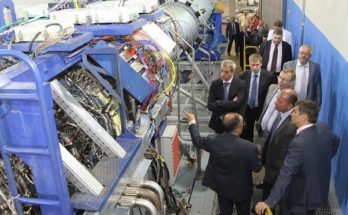by Carter Palmer, Power Systems Specialist, Forecast International.
Is there a way, especially in the United States, to harness wind power without encountering the many downsides associated with doing so? To answer that question, one must look elsewhere in the world.
Wind farms have been around for decades and their relatively green carbon footprint makes them a popular choice for energy production. Despite the seemingly simple design of wind turbines, their placement must be carefully chosen and many factors considered. The recent opening of the Block Island Wind Farm, an offshore wind farm in Rhode Island, highlighted some placement issues that wind farms can present. Many oppose these massive turbines for aesthetic reasons; they can ruin the once untouched scenery. However, a new technology from across the pond may end this and other arguments against this power source once and for all.
Wind turbines are massive pieces of engineering and, for some, they present an eyesore. The general problem is that these offshore turbines, like their onshore counterparts, must be anchored in the earth. Various factors must be considered in their design, but generally speaking, these turbines cannot be anchored in anything deeper than 30 meters. This limits where these turbines can be placed and, more often than not, these rather shallow waters where the turbines can be installed lay within sight of land. There is also the environmental impact they can have on wildlife.
The effect that turbines, both on- and offshore models, have on wildlife is not well understood. Mortality rates for birds and bats around turbines are indeed high; however, it is claimed that this rate is commensurate with other structures. Again, research in this area is not definitive. Additionally, the effects of anchoring offshore machines in the seabed are also unclear.
Enter Floating Turbines
Rather than anchoring turbines directly to the seabed, the structures could float at sea. Research conducted on such turbines has been paying off. Equinor’s (formerly Statoil) Hywind, the world’s first floating wind farm, has been producing energy since October 2017. Located off of Petershead, Scotland, the Hywind farm’s six floating turbines, which produce 30 MW of power, have been beating performance expectations. But what of prior aversion to wind farms?
Presumably there is none – at least no traditional arguments against the structures have been reported. Aesthetically speaking, these turbines are located far enough from the mainland that they cannot be seen (29 km offshore). Also, as these machines are floating, they only need to be indirectly anchored in the seabed and thus mitigate environmental impact – a veritable win-win.
Parts of Asia and the West Coast of the United States are just two of the many places that could benefit from this technology. As with any new technology, there are drawbacks – price being one; however, as the technology matures, costs will decrease. Floating wind farms might indeed catch on.

As an analyst for Forecast International’s Industrial & Marine Turbine Forecast, author Carter Palmer specializes in examining key gas turbine programs for electrical power generation, mechanical drive, and marine propulsion applications.
For 50 years, Forecast International intelligence reports have been the aerospace and defense industry standard for accurate research, analysis, and projections. Our experienced analysts compile, evaluate, and present accurate data for decision makers. FI's market research reports offer concise analysis of individual programs and identify market opportunities. Each report includes a program overview, detailed statistics, recent developments and a competitive analysis, culminating in production forecasts spanning 10 or 15 years. Let our market intelligence reports be a key part of reducing uncertainties and mastering your specific market and its growth potential. Find out more at www.forecastinternational.com




